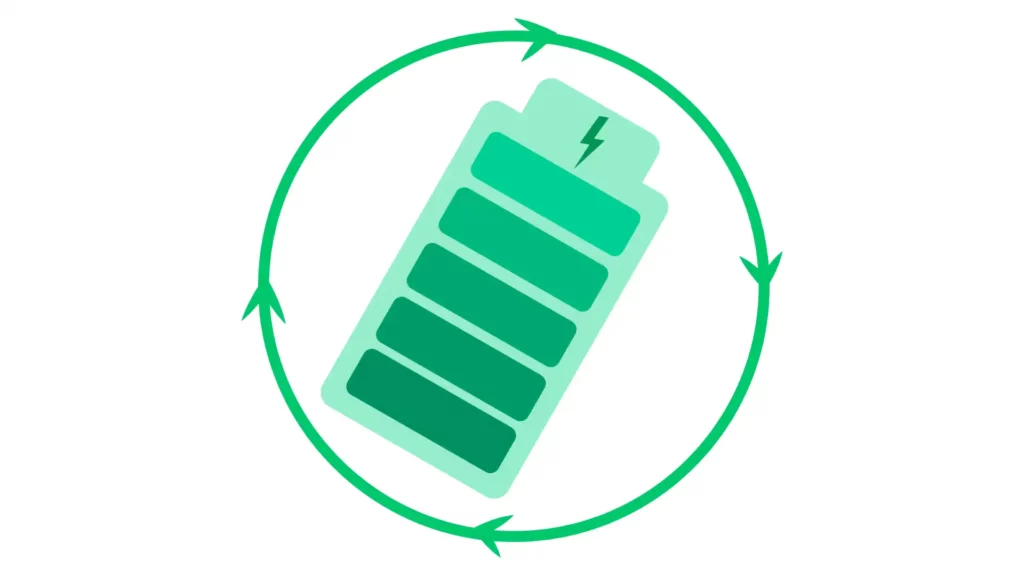In the quest for more sustainable and efficient energy solutions, one technology stands out for its potential to revolutionize how we power our world: solid state batteries.
With solid state battery efficiency being a hot topic among researchers, manufacturers, and consumers alike, it's crucial to understand what makes these batteries so promising and how they compare to traditional lithium-ion batteries.
This comprehensive guide will explore solid state battery efficiency, its advantages, challenges, and the impact it could have on various industries.
Understanding Solid State Batteries
Before delving into solid state battery efficiency, let's clarify what solid state batteries are.
Unlike conventional batteries, which use liquid or gel electrolytes, solid state batteries employ a solid electrolyte.
This fundamental difference not only affects their efficiency but also their safety, longevity, and potential applications.
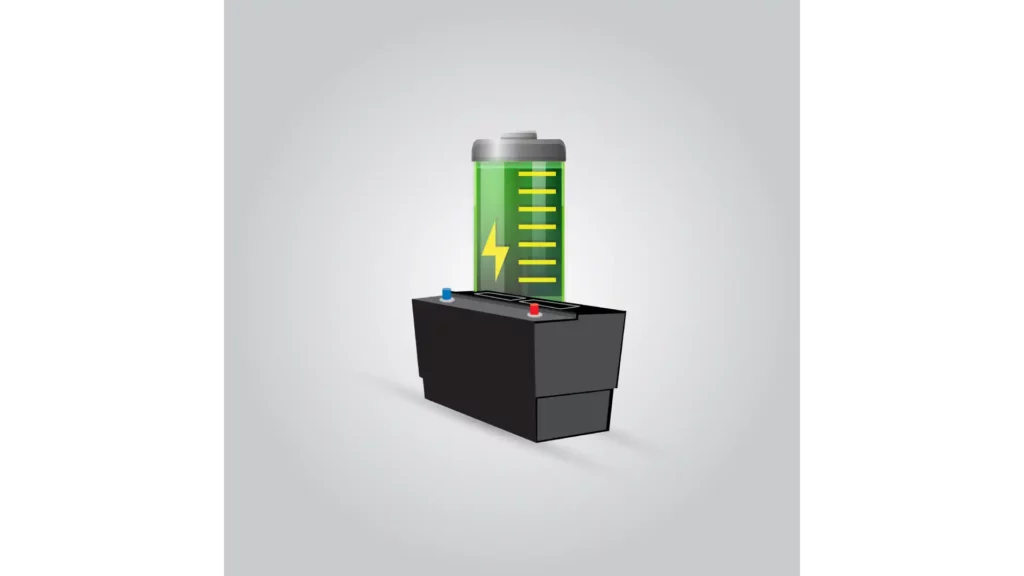
The Science Behind Solid State Battery Efficiency
Solid state battery efficiency hinges on the materials used for the solid electrolyte and the battery's overall design.
These batteries can achieve higher energy densities, meaning they can store more energy in the same amount of space than their liquid-based counterparts.
This efficiency is a game-changer for electric vehicles (EVs), portable electronics, and renewable energy storage systems.
Comparison with Lithium-ion Batteries
To fully grasp the groundbreaking potential of solid state battery efficiency, it's crucial to stack it against the reigning champion of portable and renewable energy applications, lithium ion batteries.
Despite their dominance, lithium-ion batteries come with inherent limitations that solid state batteries aim to address and surpass.
Here's a consolidated list highlighting the comparative advantages of solid state over lithium-ion batteries:
- Safety: Lithium-ion batteries are known for safety risks from volatile liquid electrolytes, leading to thermal runaway and potential fires or explosions. Solid state batteries use solid electrolytes, reducing combustion risk for safer device and vehicle power.
- Lifespan and Degradation: Liquid electrolytes in lithium-ion batteries degrade during charging and discharging, reducing capacity and lifespan. Solid state batteries with solid electrolytes experience less degradation, offering longer lifespan and reliable performance.
- Energy Density and Efficiency: Solid state batteries offer higher energy density and potential for faster charging compared to lithium-ion batteries. Their solid electrolytes allow for tighter electrode packing, leading to more energy storage in the same space.
- Manufacturing and Cost Challenges: Solid state batteries offer benefits but encounter obstacles like complex production and higher costs. With advancements in technology, these challenges are being tackled, paving the way for solid state batteries to replace lithium-ion ones.
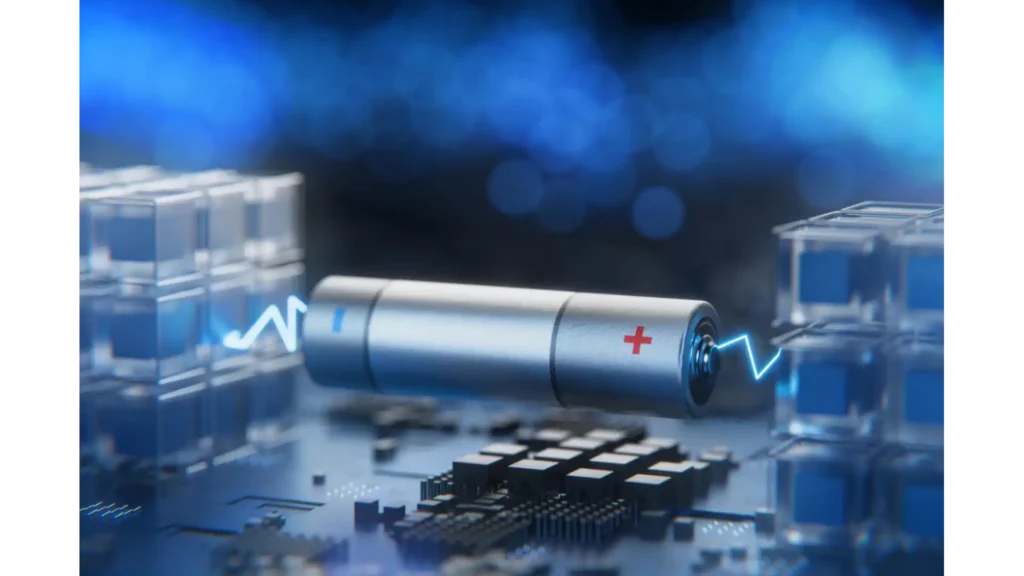
Advantages of Solid State Battery Efficiency
Solid state battery efficiency brings a host of benefits that extend well beyond what traditional battery technologies can offer.
These advantages make solid state batteries a promising solution for a future powered by cleaner, more reliable, and more sustainable energy sources.
Below is an expanded list of benefits highlighting the multifaceted superiority of solid state battery efficiency:
- Increased Energy Density: Solid state batteries offer a higher energy density compared to traditional batteries, enabling them to store more energy in the same amount of space.
- Enhanced Safety: By eliminating liquid electrolytes, solid state batteries significantly reduce the risk of leaks and fires. This safety improvement is crucial for consumer electronics, electric vehicles, and energy storage systems.
- Longer Lifespan: The efficiency of solid state batteries leads to less degradation over time, ensuring these batteries outlast their traditional counterparts.
- Faster Charging Times: Solid state batteries can potentially charge much faster than lithium-ion batteries. The solid electrolyte's superior ion conductivity allows for rapid recharging, which is a game-changer for electric vehicles and gadgets.
- Lower Operating Temperatures: Solid state batteries operate efficiently at a broader range of temperatures, including lower temperatures where traditional batteries struggle.
- Minimal Temperature Sensitivity: These batteries exhibit less sensitivity to temperature fluctuations, maintaining performance across a wide temperature range.
- Environmentally Friendly: With fewer toxic materials and a longer lifespan, solid state batteries have a smaller environmental footprint.
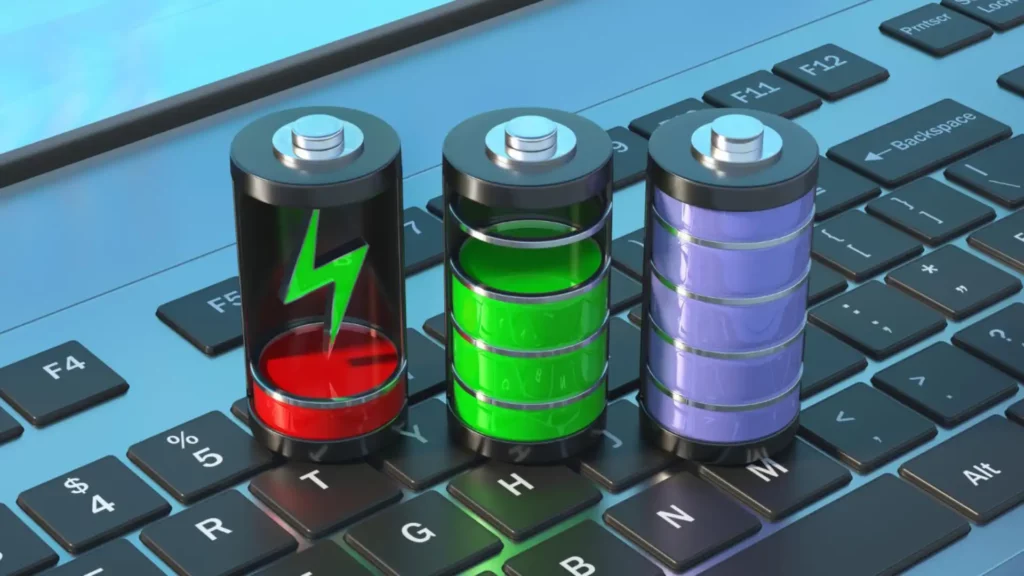
Advancements Fueling Solid State Battery Efficiency
Research on solid state battery efficiency is advancing rapidly, with a focus on improving efficiency and revolutionizing energy storage.
Innovations in materials science, engineering, and manufacturing are driving progress in this field, aiming to enhance battery performance across different industries.
Breakthroughs in Solid Electrolyte Materials
At the heart of solid state battery efficiency innovation are the solid electrolytes that facilitate ion transport without the need for liquid or gel mediums. Researchers are exploring a wide array of materials, including:
- Ceramics: Known for their high ionic conductivity and thermal stability, ceramic electrolytes are being engineered to reduce resistance at the interface with electrodes, thereby enhancing overall battery performance.
- Polymers: Polymer-based electrolytes are thin and bendable, ideal for wearable devices and flexible electronics. Research aims to improve conductivity and mechanical strength to prevent battery failure due to dendrite penetration.
- Solid Composites: Researchers are developing composite electrolytes with ceramic and polymer qualities for solid state batteries that are efficient and durable.
Manufacturing Innovations
The transition from laboratory breakthroughs to commercially viable products hinges on overcoming significant manufacturing challenges. Innovations in this area include:
- Scalable Production Techniques: Developing cost-effective, scalable production methods is crucial for the widespread adoption of solid state batteries.
- Interface Engineering: A major focus of manufacturing research is the optimization of the interface between the solid electrolyte and the electrodes. Advances in surface coating technologies and self-assembling materials are helping to reduce interfacial resistance and improve ion transfer.
- Automated Assembly: To meet the high standards of consistency and quality required for solid state batteries, researchers are leveraging robotics and AI-driven processes.
The Role of Computational Modeling
Computational modeling is crucial for solid state battery development, predicting material behavior and guiding electrolyte and electrode selection.
It helps researchers identify materials and design strategies early on, saving time and money compared to physical experiments.
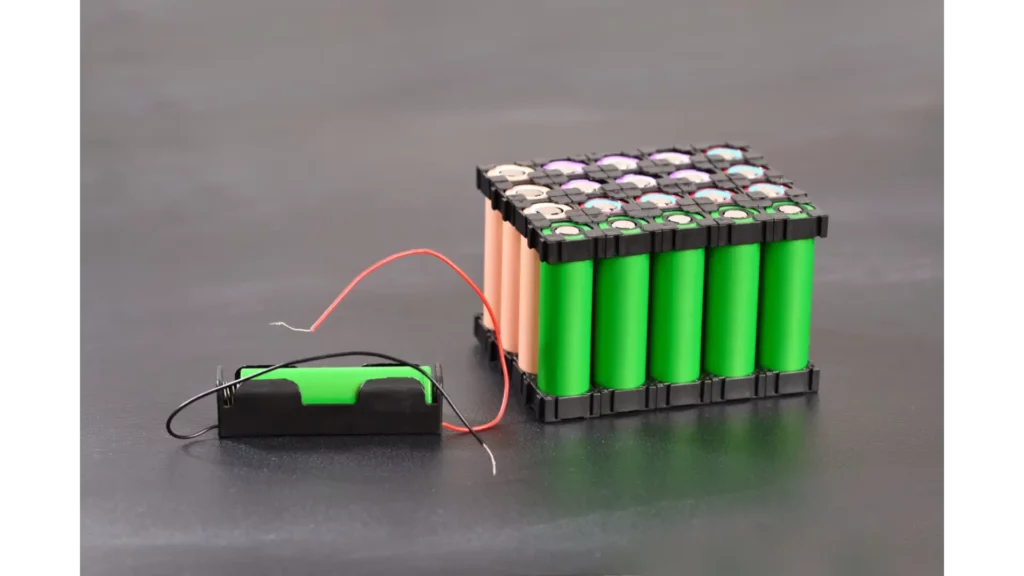
The Impact of Solid State Battery Efficiency on Industries
Solid state battery efficiency is setting the stage for a transformative shift across a wide range of industries, heralding innovations that promise to enhance sustainability, safety, and performance.
This efficiency revolution touches various sectors, extending far beyond the initial trio of electric vehicles, consumer electronics, and renewable energy storage.
Here’s a summary of the broad impact:
- Aerospace and Aviation: Enhancements in flight times, safety, and the reliability of power sources for drones, commercial aircraft, and space vehicles.
- Medical Devices: Improved care through longer-lasting, safer power for implantable devices like pacemakers, reducing the need for replacement surgeries.
- Wearable Technology: Advancements in battery life and design for wearables, leading to more seamless integration into daily life.
- Industrial Automation and Robotics: Increased operational efficiency and reduced maintenance for robots and automated systems in manufacturing and beyond.
- Smart Grids and Energy Systems: Greater stability and sustainability for renewable energy supply, contributing to a more resilient energy infrastructure.
- Maritime Transportation: Potential for cleaner, electric-powered vessels, reducing emissions and pollution in the maritime sector.
- Emergency Power Supply: Reliable, quick-charging power for critical applications, ensuring continuity in hospitals, data centers, and emergency response.
- Portable Power Stations: Enhanced portability and energy availability for outdoor activities and remote work, offering power where traditional sources are absent.
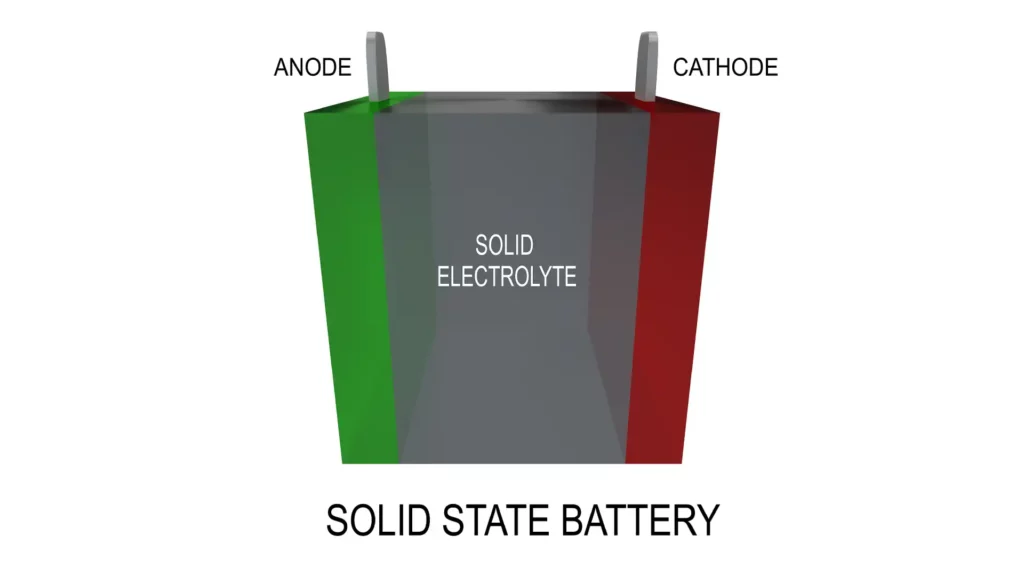
Paving the Way for a Sustainable Future: Solid State Battery Efficiency
The shift towards cleaner energy relies on solid state battery tech, which could revolutionize various industries.
To maximize efficiency, extensive R&D is needed to overcome challenges and unlock its full potential.
- Accelerating Research and Development
Efforts to improve solid state batteries involve research on materials, battery architecture, and manufacturing processes.
The goal is to enhance ion conductivity, energy density, stability, and scalability.
- Overcoming Technical Challenges
Solid state battery commercialization faces challenges like interface resistance, mechanical stability, and thermal management.
Solutions involve new solid electrolyte materials with improved properties and engineering techniques for optimal battery structure.
- Scaling for Mass Adoption
To replace lithium-ion batteries, solid state batteries need to scale production efficiently and maintain quality.
This requires refining manufacturing processes and increasing production capacity to meet rising demand. Collaboration between academia, industry, and government is key to addressing scalability challenges.
- Regulatory and Environmental Considerations
Advancements in solid state battery tech must align with regulations and eco-friendly practices to be successful. Safety, performance, and recyclability standards are crucial for their environmental impact and consumer trust.
- The Future Landscape
Solid state batteries have the potential to revolutionize the energy landscape by offering higher energy densities, improved safety, and longer lifespans.
They could enhance electric vehicles, renewable energy storage, and portable electronics, while also helping reduce greenhouse gas emissions and promote a sustainable global economy.
- Embracing Innovation
The future of solid state batteries is promising but demanding. Innovation, collaboration, and R&D investments are key to overcoming challenges and maximizing benefits such as efficiency, safety, and sustainability.
Frequently Asked Questions About Solid State Battery Efficiency
What Are Solid State Batteries?
Solid state batteries are a type of battery technology that uses solid electrolytes instead of the liquid or gel electrolytes found in traditional batteries. This change in materials allows for improvements in energy density, safety, and longevity.
How Do Solid State Batteries Work?
Solid state batteries work by allowing ions to move through a solid electrolyte material from the negative electrode to the positive electrode during discharge and back when charging. The solid state electrolyte replaces the liquid or gel found in conventional batteries, leading to various efficiency and safety benefits.
Why Are Solid State Batteries More Efficient?
Solid state batteries are considered more efficient because they can store more energy in the same space, have a higher energy density, and exhibit less energy loss during charge and discharge cycles compared to traditional lithium-ion batteries.
Can Solid State Batteries Explode?
One of the significant advantages of solid state batteries is their increased safety. The use of solid electrolytes significantly reduces the risk of leakage and explosion compared to liquid electrolyte batteries, making them safer for consumer and industrial use.
How Long Do Solid State Batteries Last?
Solid state batteries have the potential to last significantly longer than their lithium-ion counterparts. They are less prone to degradation over time and can withstand more charge and discharge cycles before their performance begins to diminish.
Are Solid State Batteries Available Now?
As of now, solid state batteries are still largely in the development and testing phase, with several companies and research institutions working on overcoming the remaining technical challenges. Some prototypes and limited applications are in use, but widespread commercial availability is expected in the coming years.
How Much Do Solid State Batteries Cost?
Currently, solid state batteries are more expensive to produce than traditional lithium-ion batteries due to the novel materials and manufacturing processes involved. However, as technology advances and production scales up, costs are expected to decrease.
What Are the Main Challenges Facing Solid State Batteries?
The main challenges include finding solid electrolyte materials that offer high ionic conductivity, manufacturing scalability, and reducing costs. Addressing these challenges is crucial for making solid state batteries a viable alternative to traditional batteries.
What Applications Will Benefit Most from Solid State Batteries?
Electric vehicles, portable electronics, and renewable energy storage systems stand to benefit significantly from the increased efficiency, safety, and longevity of solid state batteries.
How Will Solid State Batteries Impact the Environment?
Solid state batteries could have a positive impact on the environment by providing safer, longer-lasting energy storage solutions that support the broader adoption of renewable energy sources and electric vehicles, reducing reliance on fossil fuels and lowering carbon emissions.
Final Thoughts on Solid State Battery Efficiency
As we stand on the cusp of an energy revolution, the promise of solid state battery efficiency personally excites me, offering a glimpse into a future powered by cleaner, safer, and more sustainable energy solutions.
This technology has the potential to transform not just how we power our vehicles and devices but also how we approach the broader challenges of climate change and energy sustainability.
Through continued innovation, collaboration, and a commitment to overcoming technical and manufacturing hurdles, we can unlock the full potential of solid state batteries.
This journey isn't just about advancing technology; it's about building a better, more sustainable world for future generations, a goal that deeply resonates with me and, I believe, with many others who envision a greener, more efficient future.
Source
https://newscenter.lbl.gov/2023/02/23/on-the-road-to-better-solid-state-batteries/
https://new.nsf.gov/news/researchers-develop-promising-approach-smaller

